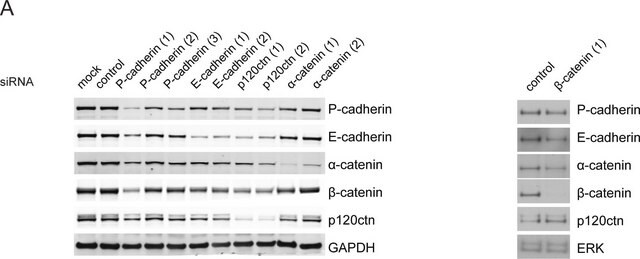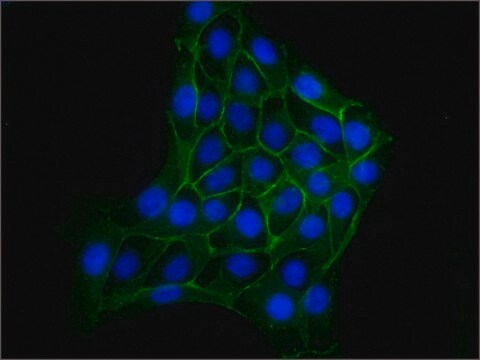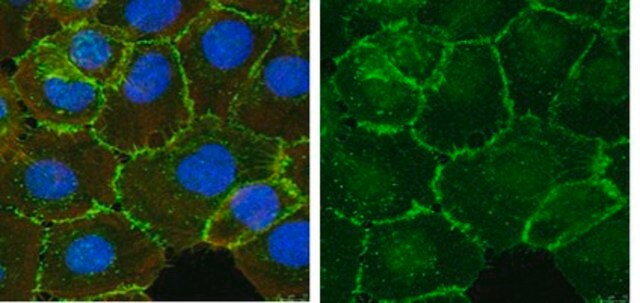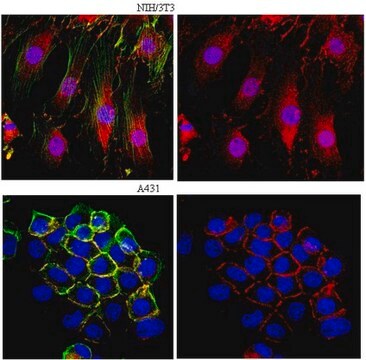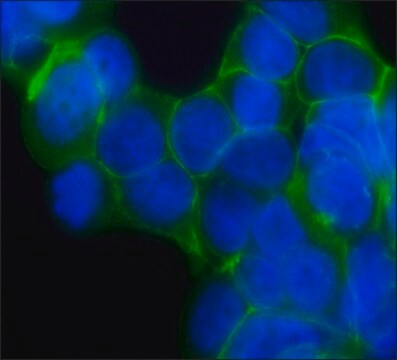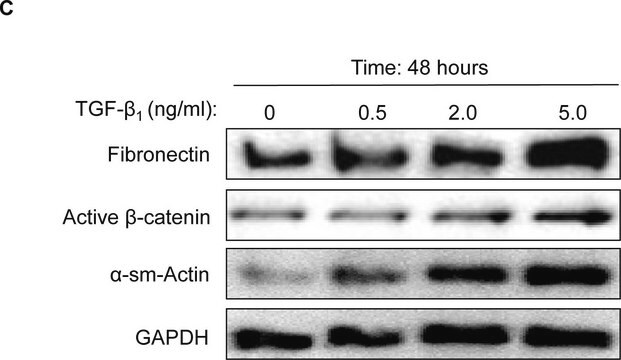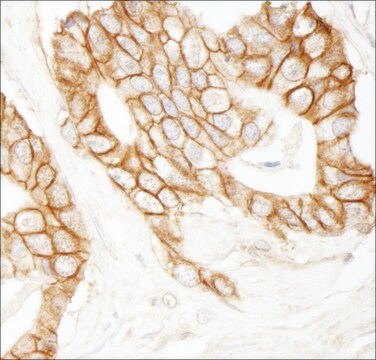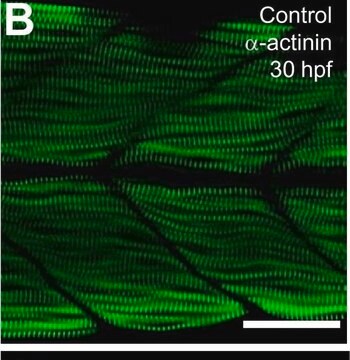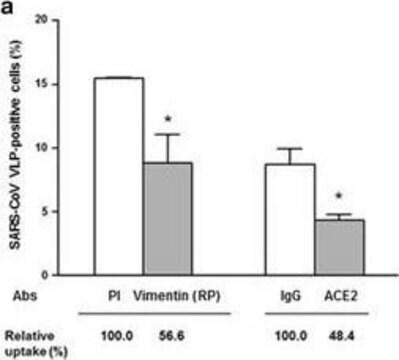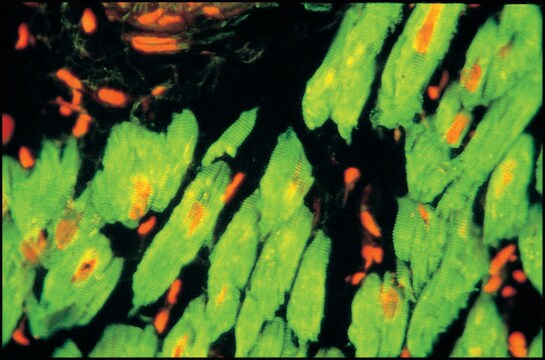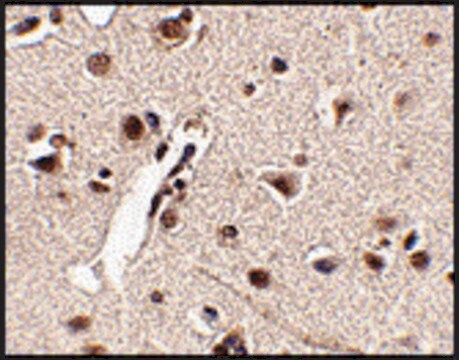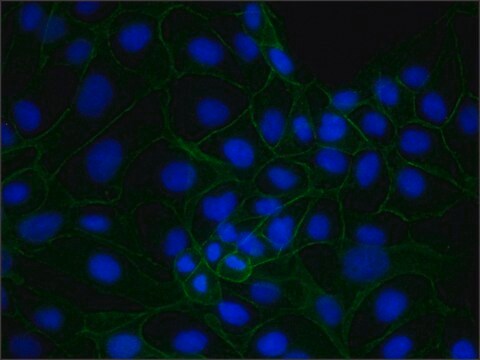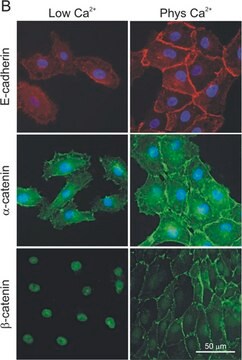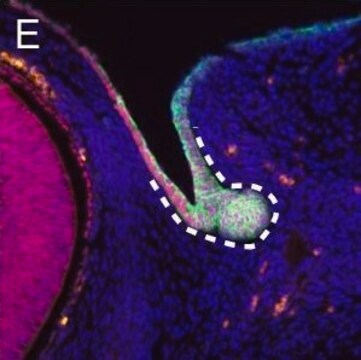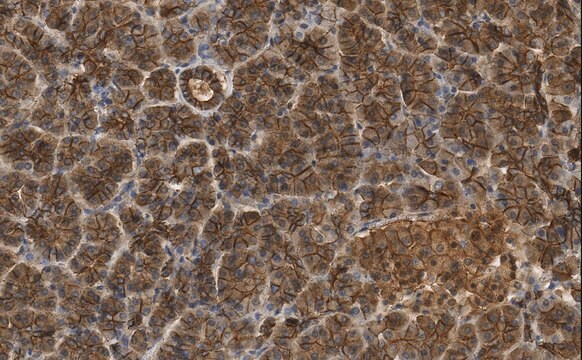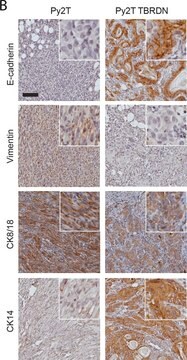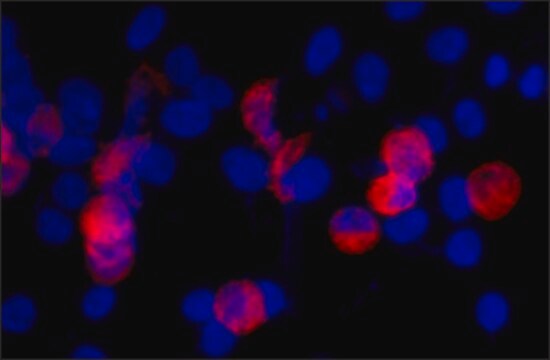C7207
Monoclonal Anti-β-Catenin antibody produced in mouse
clone 15B8, ascites fluid
Sinônimo(s):
Monoclonal Anti-β-Catenin
About This Item
Produtos recomendados
fonte biológica
mouse
Nível de qualidade
conjugado
unconjugated
forma do anticorpo
ascites fluid
tipo de produto de anticorpo
primary antibodies
clone
15B8, monoclonal
peso molecular
antigen 94 kDa
reatividade de espécies
chicken, bovine, human, canine
técnica(s)
immunocytochemistry: suitable
immunohistochemistry (frozen sections): suitable
indirect immunofluorescence: 1:1000 using cultured MDBK cells
microarray: suitable
western blot: 1:1000 using cultured MDBK cells extract
Isotipo
IgG1
nº de adesão UniProt
aplicação(ões)
research pathology
Condições de expedição
dry ice
temperatura de armazenamento
−20°C
modificação pós-traducional do alvo
unmodified
Informações sobre genes
human ... CTNNB1(1499)
Procurando produtos similares? Visita Guia de comparação de produtos
Descrição geral
Especificidade
Imunogênio
Aplicação
- immunoblotting
- immunohistochemistry
- immunolabeling
- immunofluorescence
- immunocytochemical staining
Ações bioquímicas/fisiológicas
forma física
Armazenamento e estabilidade
Exoneração de responsabilidade
Não está encontrando o produto certo?
Experimente o nosso Ferramenta de seleção de produtos.
recomendado
Código de classe de armazenamento
13 - Non Combustible Solids
Classe de risco de água (WGK)
WGK 1
Ponto de fulgor (°F)
Not applicable
Ponto de fulgor (°C)
Not applicable
Equipamento de proteção individual
Eyeshields, Gloves, multi-purpose combination respirator cartridge (US)
Escolha uma das versões mais recentes:
Já possui este produto?
Encontre a documentação dos produtos que você adquiriu recentemente na biblioteca de documentos.
Os clientes também visualizaram
Artigos
Cancer stem cell media, spheroid plates and cancer stem cell markers to culture and characterize CSC populations.
Nossa equipe de cientistas tem experiência em todas as áreas de pesquisa, incluindo Life Sciences, ciência de materiais, síntese química, cromatografia, química analítica e muitas outras.
Entre em contato com a assistência técnica